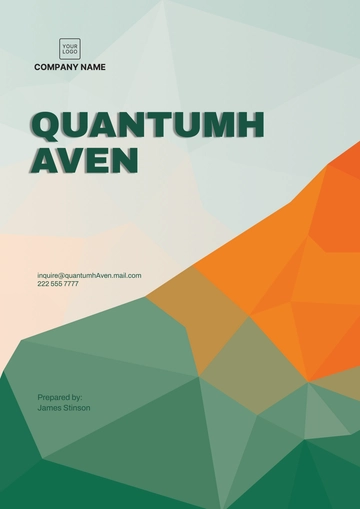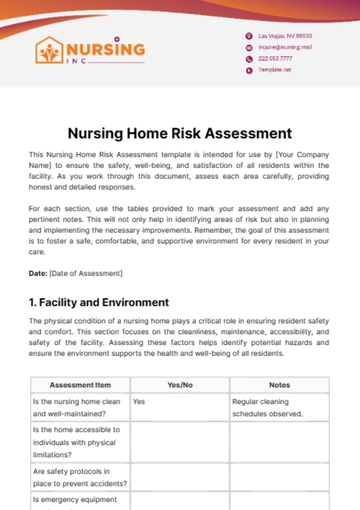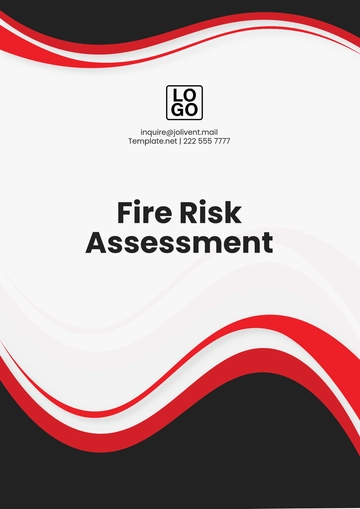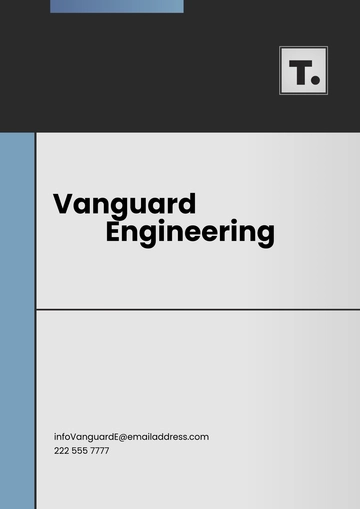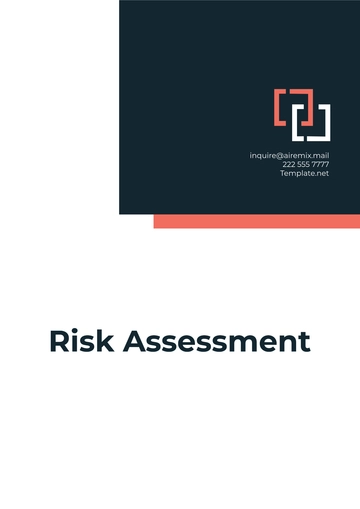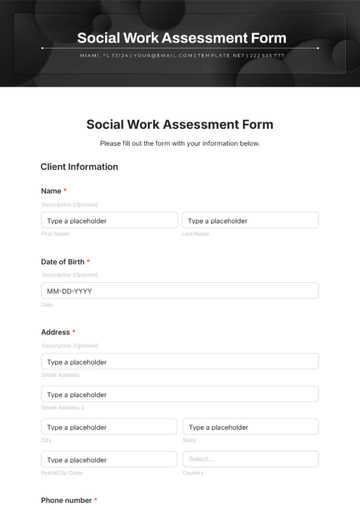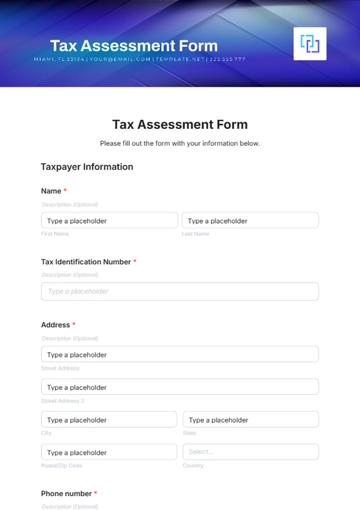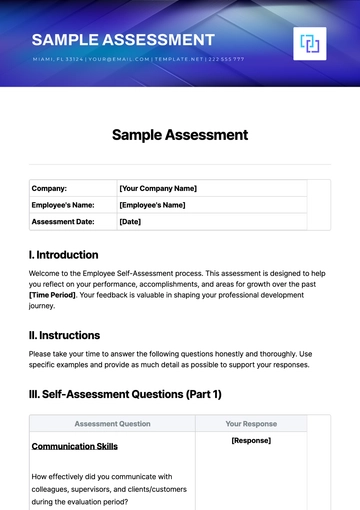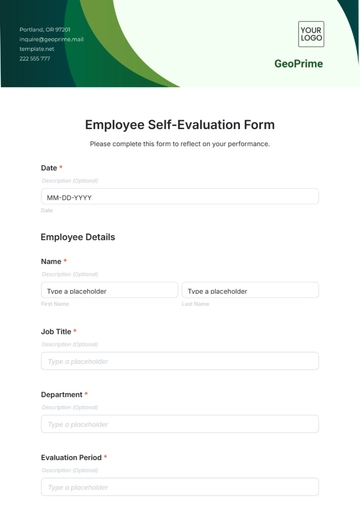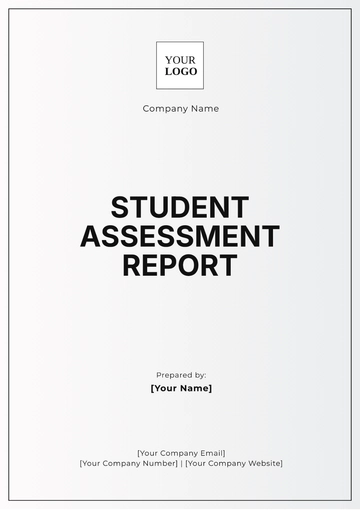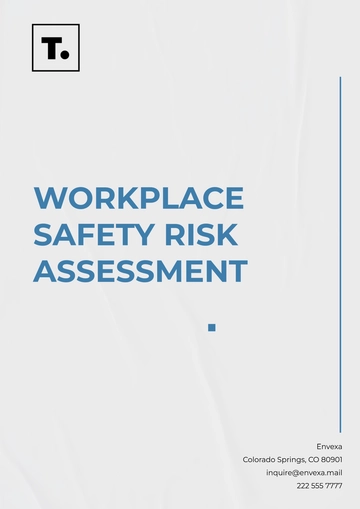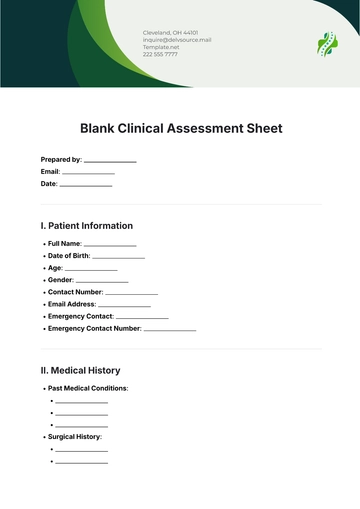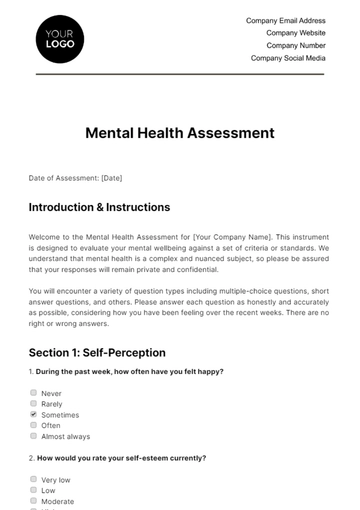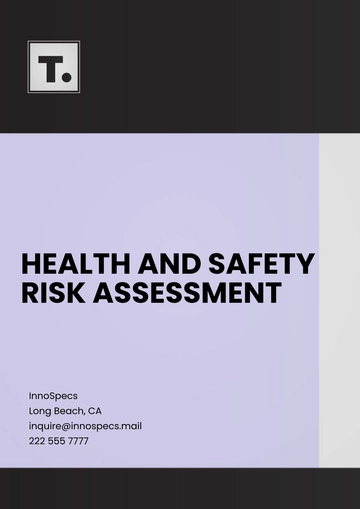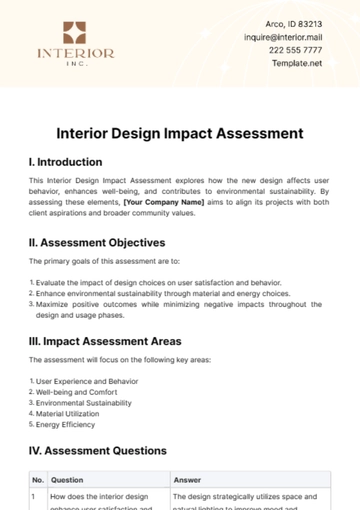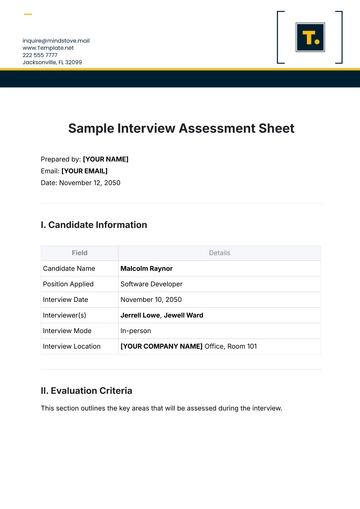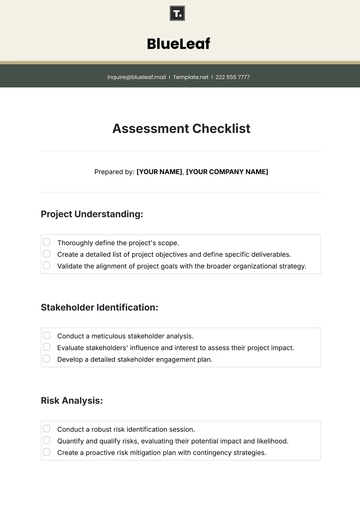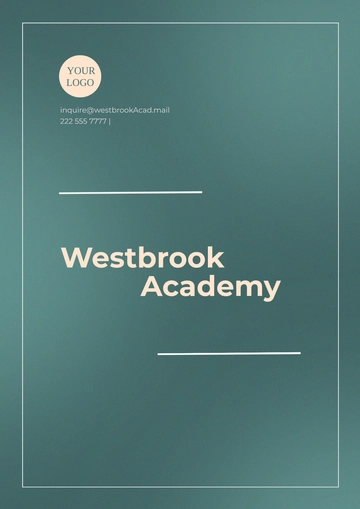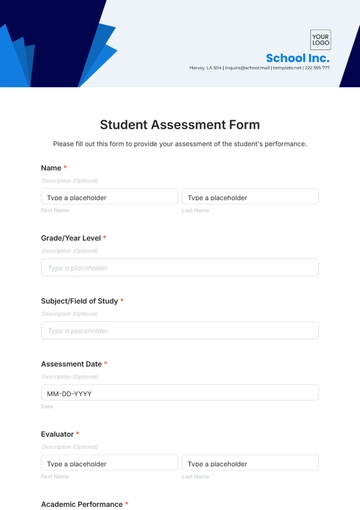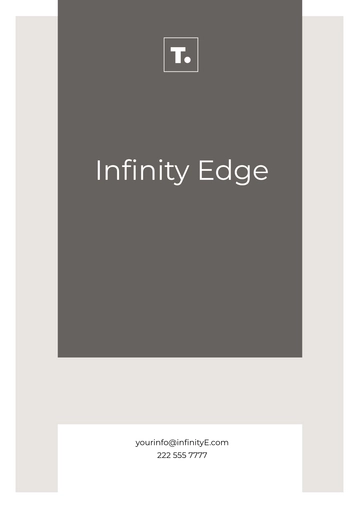Free Interior Design Risk Assessment
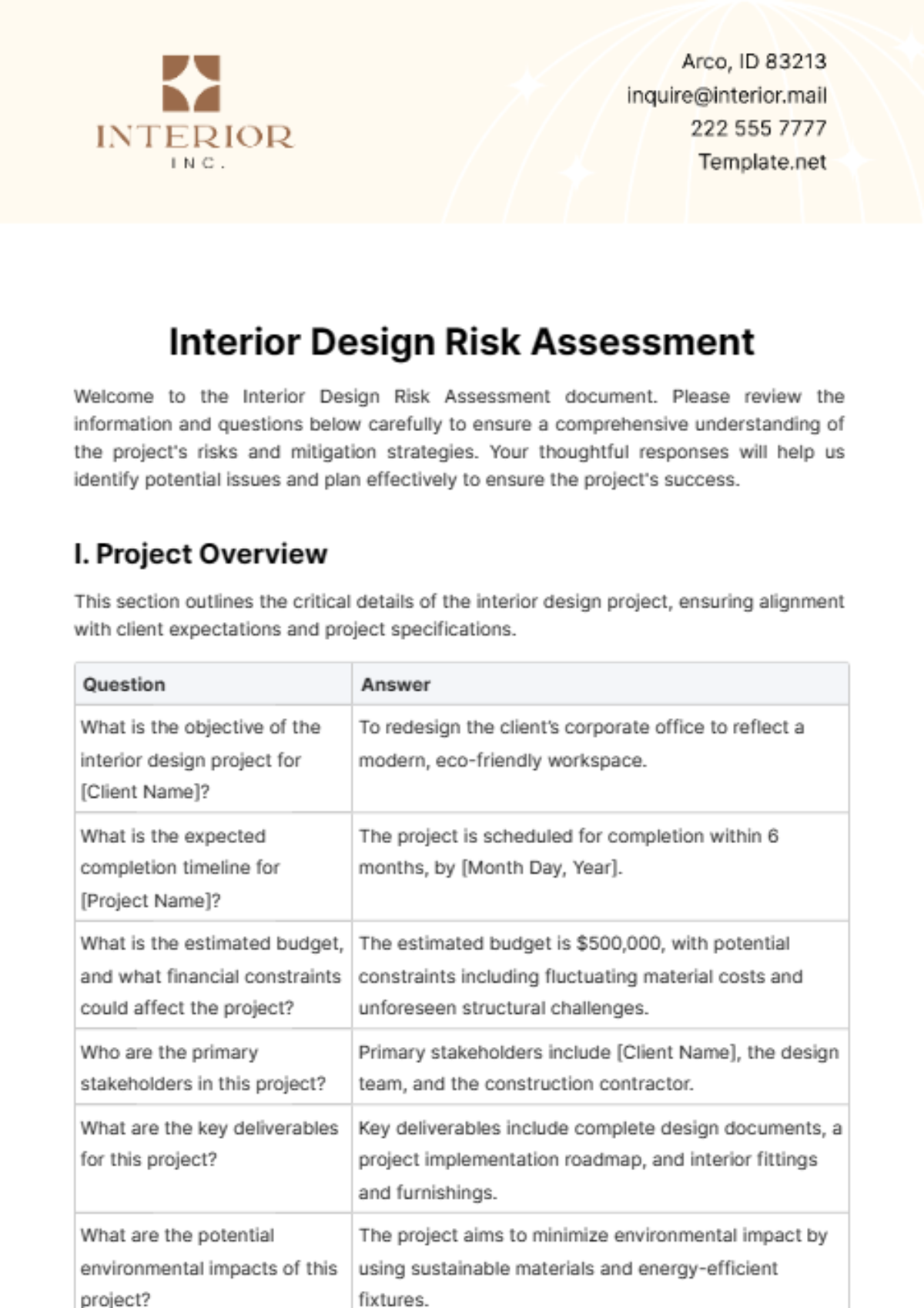
Welcome to the Interior Design Risk Assessment document. Please review the information and questions below carefully to ensure a comprehensive understanding of the project's risks and mitigation strategies. Your thoughtful responses will help us identify potential issues and plan effectively to ensure the project's success.
I. Project Overview
This section outlines the critical details of the interior design project, ensuring alignment with client expectations and project specifications.
Question | Answer |
|---|---|
What is the objective of the interior design project for [Client Name]? | To redesign the client’s corporate office to reflect a modern, eco-friendly workspace. |
What is the expected completion timeline for [Project Name]? | The project is scheduled for completion within 6 months, by [Month Day, Year]. |
What is the estimated budget, and what financial constraints could affect the project? | The estimated budget is $500,000, with potential constraints including fluctuating material costs and unforeseen structural challenges. |
Who are the primary stakeholders in this project? | Primary stakeholders include [Client Name], the design team, and the construction contractor. |
What are the key deliverables for this project? | Key deliverables include complete design documents, a project implementation roadmap, and interior fittings and furnishings. |
What are the potential environmental impacts of this project? | The project aims to minimize environmental impact by using sustainable materials and energy-efficient fixtures. |
What are the project's critical milestones? | Critical milestones include design approval, completion of half-phase construction, and final inspection. |
What are the contractual obligations for both parties? | Contractual obligations include adherence to the budget, timely completion of project phases, and regular stakeholder updates. |
How will project success be measured? | Success will be measured by on-time delivery, staying within budget, client satisfaction, and adherence to the design specifications. |
II. Compliance and Safety Risks
This section evaluates potential risks associated with non-compliance to safety standards, which could lead to legal issues or harm to end-users.
Question | Answer |
|---|---|
Have all applicable local building codes and safety regulations been reviewed for [Project Location]? | Yes, all local codes and regulations have been thoroughly reviewed and integrated into the project planning. |
Are there specific design elements requested by [Client Name] that may conflict with these standards? | No conflicts are currently identified; all design elements comply with local safety regulations. |
How are updates to local regulations monitored throughout the project? | The legal team regularly monitors local government publications and updates to ensure compliance. |
What safety training is provided to the project team? | All team members undergo safety training focused on construction and design-specific hazards. |
How is compliance with safety protocols enforced during the project? | Regular safety audits and inspections are scheduled throughout the project lifecycle. |
What liability insurance is in place for this project? | Comprehensive general liability and professional indemnity insurance are in place to cover potential risks. |
What are the emergency response plans for the project site? | Detailed emergency response plans have been developed, including evacuation routes and on-site first aid procedures. |
How is safety information communicated to all project team members? | Safety information is communicated through mandatory briefing sessions and regular updates via email and on-site notices. |
III. Supplier and Resource Risks
Assesses the reliability of suppliers and the availability of necessary materials, which can impact project timelines and budget.
Question | Answer |
|---|---|
Which key suppliers have been identified, and what is their reliability score based on past interactions? | Key suppliers include ABC Materials Co. (reliability score: 95%) and XYZ Furnishings (reliability score: 90%). |
How will shortages in essential materials, like [Specific Material], be handled? | Shortages will be managed by pre-ordering critical materials and establishing agreements with alternate suppliers. |
What are the backup plans for supplier failure? | Backup plans include a list of vetted alternative suppliers who can fulfill orders at short notice. |
How are supplier performance reviews conducted? | Supplier performance is reviewed quarterly through feedback from project teams and quality checks of delivered materials. |
What criteria are used to select new suppliers? | New suppliers are selected based on their delivery timeliness, quality of materials, and cost-effectiveness. |
How is the quality of received materials verified? | Received materials are inspected by a quality assurance team to verify compliance with specifications. |
What are the terms of contracts with suppliers to manage risks? | Contracts include clauses for penalty on late deliveries, substandard quality, and options for contract termination. |
How do fluctuating material costs impact the project budget? | Fluctuating costs are managed by fixing prices where possible and maintaining a contingency budget for unforeseen increases. |
IV. Client Requirements and Expectations
Understanding and managing client expectations is crucial for project success and client satisfaction.
Question | Answer |
|---|---|
Has a detailed requirement list been signed off by [Client Name]? | Yes, a detailed list was signed off following the initial consultation and several revision meetings. |
How frequent are the communication and update meetings with the client scheduled? | Bi-weekly meetings are scheduled to review progress and address any concerns. |
How is client feedback integrated into the project? | Client feedback is documented and reviewed in project meetings to guide adjustments and ensure alignment with client expectations. |
What mechanisms are in place to handle changes in client requirements? | A change management protocol is in place, including impact assessment and revised cost estimates to handle changes effectively. |
How is the client's understanding of the project process facilitated? | The client is provided with a detailed project handbook and regular informational meetings. |
What is the protocol for resolving disputes with the client? | Disputes are resolved through a step-by-step process outlined in the contract, starting with mediation and, if necessary, arbitration. |
How are client satisfaction metrics collected and evaluated? | Client satisfaction is evaluated through post-project surveys and direct feedback during closure meetings. |
What confidentiality measures are implemented for client-sensitive information? | All sensitive information is encrypted, and access is restricted to authorized personnel only. |
V. Mitigation Strategies
Strategies to minimize identified risks should be planned and documented here.
Question | Answer |
|---|---|
What contingencies are in place for managing delays related to supply chain issues? | Contingencies include a flexible project timeline and pre-approved additional suppliers for critical materials. |
What strategies are implemented to ensure compliance with all identified safety and building codes? | Strategies include regular training sessions on the latest codes and on-site compliance officers to monitor adherence. |
How are financial risks monitored and managed throughout the project? | Financial risks are monitored through monthly budget reviews and real-time expenditure tracking. |
What are the strategies for maintaining communication continuity with all stakeholders? | Regular updates through email, meetings, and a cloud-based project management tool ensure continuous communication. |
How is team performance monitored to mitigate project risks? | Team performance is monitored through regular reviews and feedback sessions, with additional support provided where needed. |
What are the fallback strategies for critical project phases if initial plans fail? | Fallback strategies include buffer periods built into the schedule and additional resource allocation for critical phases. |
How is technological failure addressed to minimize downtime? | Redundant systems and regular IT maintenance schedules are in place to minimize the impact of technological failure. |
What training is provided to the project team to handle emergencies? | Emergency response training is conducted bi-annually, and emergency drills are performed periodically. |
VI. Signature
Please sign below to confirm the understanding and acceptance of the potential risks and the mitigation approaches outlined in this document.
Signature: 
Name: [Your Name]
Position: [Your Position]
Date: [Date]
This detailed risk assessment ensures that all potential issues are identified, evaluated, and appropriately managed, paving the way for a successful interior design project.
- 100% Customizable, free editor
- Access 1 Million+ Templates, photo’s & graphics
- Download or share as a template
- Click and replace photos, graphics, text, backgrounds
- Resize, crop, AI write & more
- Access advanced editor
Level up your project management with Template.net's Interior Design Risk Assessment Template. This fully editable and customizable template ensures you mitigate risks efficiently. Editable in our Ai Editor Tool, it streamlines your workflow, enabling you to focus on creativity and client satisfaction. Trust our template to enhance safety and project success, empowering your design endeavors.
